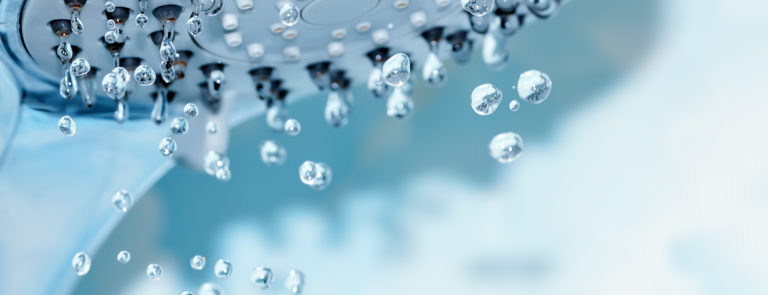15% off €35 OR 20% off €45
Code:SAVE
What is water retention? Spotting the signs and treating the symptoms

What is water retention? We help you to spot the signs and provide a few ideas on how to reduce the symptoms of fluid retention
Summary
1Common water retention symptoms
Puffy legs, swollen ankles and ballooning feet are all common symptoms of water retention, sometimes accompanied by tight, shiny, stretched red skin..
2What causes fluid retention?
Water retention is caused by a build-up of fluid, which can be caused by a number of factors. Yes, there’s a whole host of potential contenders for...
3How long does water retention last?
It totally depends on what is causing it and what you are doing to reduce it. Most water retention will usually naturally flush out after a day or...
Ever notice your shoes feeling tighter than usual?
Your laces not long enough to tie, or your toes having nowhere to wiggle?
Unless your feet have had a growth spurt, it’s possible that you’ve been experiencing an episode of water retention, sometimes called fluid retention or oedema.
Common water retention symptoms
Puffy legs, swollen ankles and ballooning feet are all common symptoms of water retention, sometimes accompanied by tight, shiny, stretched red skin.
But it’s not just your feet and lower limbs that can feel the swell.
Perhaps you’ve noticed your fingers and hands looking a little puffy, or your rings feeling tighter than usual.
Or maybe you’ve had some unexpected weight gain.
Water retention can be an uncomfortable nuisance, but there are ways to treat it.
What causes fluid retention?
Water retention is caused by a build-up of fluid, which can be caused by a number of factors.
Yes, there’s a whole host of potential contenders for the cause of your puffy parts.
8 causes of water retention
- Regular hormonal fluctuations. Women can thank progesterone and oestrogen and the menstrual cycle for that monthly gift from nature.
- Standing or sitting in the same position for too long. That’s why you sometimes get ‘tight shoes’ on a long-haul flight
- Eating too much processed and salty food
- Being pregnant
- Taking certain medicines
- Experiencing an acute injury such as a strain or sprain or an insect bite or sting
- An underlying medical condition
- Starting a new exercise routine
Is it bad to retain water?
Water retention is a common issue and most of us will feel it from time to time. It doesn’t usually cause serious problems, but it can be a signal from our bodies that something more serious is at play.
If your symptoms persist, you should chat to your GP to find out what’s causing your ballooning limbs. It could be a sign of another, more serious medical condition, so it’s important to get yourself checked out.
How long does water retention last?
It totally depends on what is causing it and what you are doing to reduce it. Most water retention will usually naturally flush out after a day or so if there is no underlying problem.
What is the difference between water retention in legs or water retention in feet?
Water retention can occur in various parts of the body, but it is most common in the feet and legs.
There seems to be no significant difference between getting water retention in your feet or in your legs unless you have injured one of the areas.
How to manage water retention?
Fluid retention symptoms can be an uncomfortable nuisance. The good news is that there are ways to reduce water retention and, in many cases, it will go away without any intervention.
It’s probably no surprise that some simple lifestyle changes could be the key to treating occasional bouts of fluid retention.
Following a sensible exercise regime and eating the right foods are the two best ways to reduce water retention naturally.
For more persistent problems, or for symptoms caused by an underlying health condition, your GP will give specific advice based on your individual medical needs.
How do you get rid of water retention fast?
Moving your body, putting your legs up and drinking more water are all quick ways to try and get rid of your water retention – no visit to the GP required.
Below are 9 of the most popular potential managements for water retention you can try at home.
9 simple ways to reduce water retention yourself
Take control and reduce water retention symptoms:
- Move - Exercise helps encourage blood circulation, which in turn helps excess fluid move through your body.
- Put your legs up - Elevating your legs above your heart encourages excess fluid to drain back and away from your swollen feet and toes. Of course, it’s not always practical to lie down and put your feet up whenever you fancy. But when you’re at home, it’s the perfect excuse to plump up the pillows and put your feet up on the couch.
- Drink more - It may seem counter-intuitive, but drinking more water could actually help prevent water retention. When you’re dehydrated, your body will hold onto water to help you through a drought. Drink up and show your body there’s no need to hold on to water unnecessarily. In addition to drinks, choosing foods containing lots of water can help too. Celery, watermelon and cucumber are perfect snacks for banishing water retention naturally. Handpicked content: Which foods are best for hydration?
- Hold the salt - Salt can encourage your body to hold on to excess fluid, so it makes sense to limit your salt intake. Don’t forget, it’s not just how much you sprinkle on your chips – the real danger is the salt hidden in everyday food items including bread and cereals, as well as takeaways and convenience foods. Swap ready meals and processed snacks for fresh fruit and vegetables where possible. But as a minimum, opt for low salt options in processed foods.
- Choose natural diuretics - Celery, watermelon and cucumber are perfect snacks for banishing water retention naturally.
- Boost your B vitamins - A good anti-water retention diet is full of B vitamins. It’s thought that B vitamins can play an important role in circulatory health and fluid retention. So, make leafy greens and other vitamin B-rich foods your friend.
- Mind your minerals - The same goes for magnesium and potassium-rich foods. These essential minerals work hard to regulate fluid levels in your body. Bananas and spinach are potassium-rich powerhouses, whilst leafy greens, nuts and seeds are choc-full of magnesium and other essential minerals.
- Water retention tablets - Another popular water retention treatment is taking water retention tablets. They usually contain natural, herbal extracts like dandelion herb root and uva-ursi leaf extract, which have been used traditionally for years to help reduce excess fluid retention.
- Avoid tight clothes and don’t sit or stand still for too long - Keep moving to keep your circulation flowing. If these natural remedies are not working, you can also try to reduce water retention by going to your GP and requesting water retention tablets, a.k.a diuretics.
The advice in this article is for information only and should not replace medical care. Please check with your GP or healthcare professional before trying any supplements, treatments or remedies. Food supplements must not be used as a substitute for a varied and balanced diet and a healthy lifestyle.



